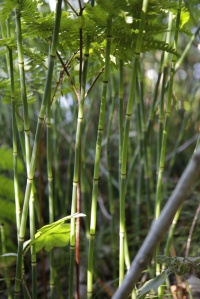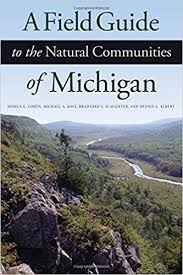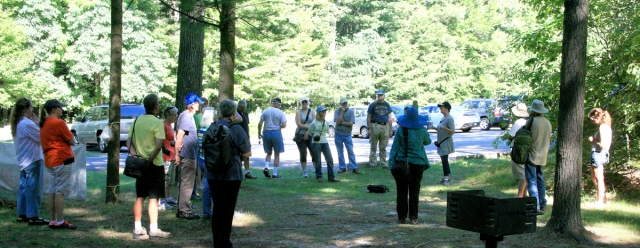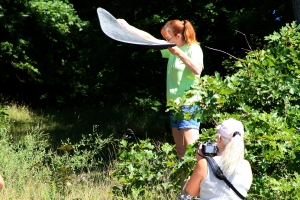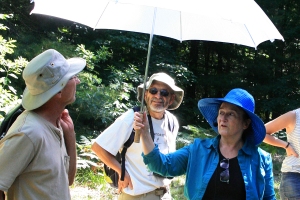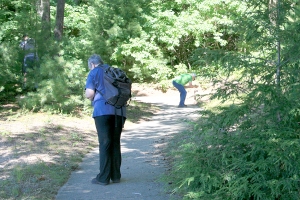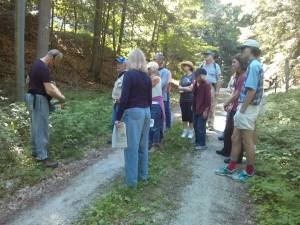
As I expected, our guide, Doug Paprocki, did not disappoint, and we had another very interesting and educational hike in his duneland forest. Again this year, Doug set up educational stations throughout his planned route.
Last year, we had nearly 60 participants. This year there was a more manageable-sized group of about 15, which allowed for much greater hiker participation.
First, Doug asked us to identify trees along the beginning of our walk, leading us to discover that this dunal forest area is a northern hardwood forest community. The presence of evergreens, as well (eastern hemlocks and white pines), suggests it is a transition community between a boreal forest type to the north and a maple-oak forest type to the south.
As we progressed through Doug’s stations, we learned many things:
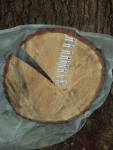 Counting annual tree rings on slabs taken from downed forest trees have provided a picture of the ages of various tree species. For example, some white ashes are over 100 years old. And there are northern red oak trees more than 150 years old.
Counting annual tree rings on slabs taken from downed forest trees have provided a picture of the ages of various tree species. For example, some white ashes are over 100 years old. And there are northern red oak trees more than 150 years old.
There are slow growing hemlock trees that have been on the site since American Revolution times.
Even though the forest is in the dunes, the floor is not all sand. Doug dug down into the ground about a foot to show us the organic materials that accumulated since the dune formed here, beginning probably some 3000 years ago. 

Hornbeam leaves
We saw hornbeam trees. I had never heard of this species, which are “understory” trees usually growing under larger trees and are much shorter, reaching approximately 30 feet high when mature.
We learned that black cherry trees here are a pioneer species, which indicates the area was more open at one time. Pioneer species are the first to populate ecosystems that have been disrupted or damaged. Over time, other species, not as hardy as pioneer species begin to be established. The leaves and branches of black cherry trees are poisonous to deer.

Beech scale
 Some shelf bracket fungi feed on living material, in this case, a beech tree. Such fungi are parasitic and can weaken or kill a tree. Doug told us that beech scale insects, which leave a white coating on beeches, were first detected in trees here about a decade ago. The insects boring into the bark leave openings that can allow a damaging fungus to enter.
Some shelf bracket fungi feed on living material, in this case, a beech tree. Such fungi are parasitic and can weaken or kill a tree. Doug told us that beech scale insects, which leave a white coating on beeches, were first detected in trees here about a decade ago. The insects boring into the bark leave openings that can allow a damaging fungus to enter.
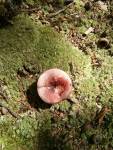 Reddish beech russula fungi tap into beech tree roots, providing water and nutrients to the tree, and in return receiving carbohydrates from the tree, a symbiotic relationship.
Reddish beech russula fungi tap into beech tree roots, providing water and nutrients to the tree, and in return receiving carbohydrates from the tree, a symbiotic relationship.
We saw several moss species, which are the most primitive of plants; they do not have roots or a circulatory system, but receive their moisture and nutrients directly from the air. They are a connector species in the evolution of aquatic to terrestrial plants.
We noted a moccasin orchid, found by Doug’s friend, Maryellen, and Connie Crancer on a previous hike. Orchid seeds are extremely tiny, and, for germination, must be in dark soil and then come into contact with a specific fungus which penetrates the seed. The young plant develops by feeding on the fungus.
Who knew? We learned there is a white rot and a brown rot that occurs in dead wood, the decay caused by different fungus species.
Regular hike attendee and plant expert, Marie Johnson, pointed out why some of the oak leaves are so large. There are “sun leaves,” which are smaller, and “shade leaves,” which are larger. Leaves that end up in the sun are generally smaller– they are called “sun leaves.” They have different levels of evaporation. Sun leaves are closer to the top of the trees and shade leaves are closer to the bottom.
Size does not necessarily correlate with age in the tree family. Doug noted how a tall white pine was bigger than many other trees in the area, but younger.

Indian pipe
Photo credit: Doug Paprocki
We were excited to see Indian pipe, a ghostly looking plant, which has no chlorophyll–and must depend upon fungi for its nutrients.
We saw a black fungus called a clinker fungus. This strange looking fungus is also called a Chaga mushroom, and is said by some to have medicinal benefits.
Coming upon a number of white pine charred stumps, Doug talked about some of the history of the property and how, in the late 1880s thru the1890s, timber was cut from this duneland. In 1892, a Huston family began buying the property, and, shortly thereafter, they burned and seeded some flat acreage adjacent to the dunes we were in. Doug noted that old Montague Observer news stories told of area drought and many fires in the 1890s and that the charred stumps were likely from a fire that accidentally moved into this dune area from the lowland fire clearing.

Downy rattlesnake plantain
Another orchid! One of the hikers, Lorraine, found an orchid species that Doug had not seen before on the property—the downy rattlesnake plantain!
No cinnamon rolls were identified or consumed during this hike, but we did see a pretty cinnamon-colored fungus.
 The scat box was a big one this year. Like last year, Doug had a large number of scat samples collected from the forest, including that of bobcat, skunk, and river otter.
The scat box was a big one this year. Like last year, Doug had a large number of scat samples collected from the forest, including that of bobcat, skunk, and river otter.
Doug concluded the hike with commentary on the age and type of the forest on his property, noting it is as close to a pre-settlement forest as can be found. Many trees are from 80 to 180 years old — a “century forest.” Some trees are over 200 years old. As the forest community, which is protected by a conservation easement, continues maturing in the half-century ahead, it will become an “old growth forest.”
And finally, because I am sure that inquiring minds do want to know: we noted a whopping 26 fungus species on the walk! This helps illustrate that a forest is much more than trees—and how important other organisms are to its functioning.

*Thanks to Doug for his help with this blog!
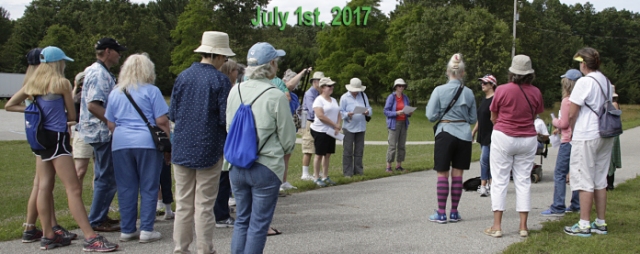

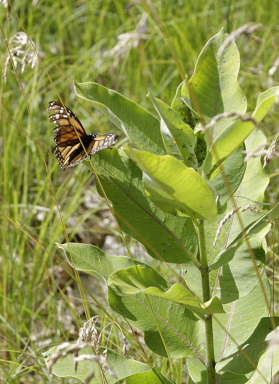



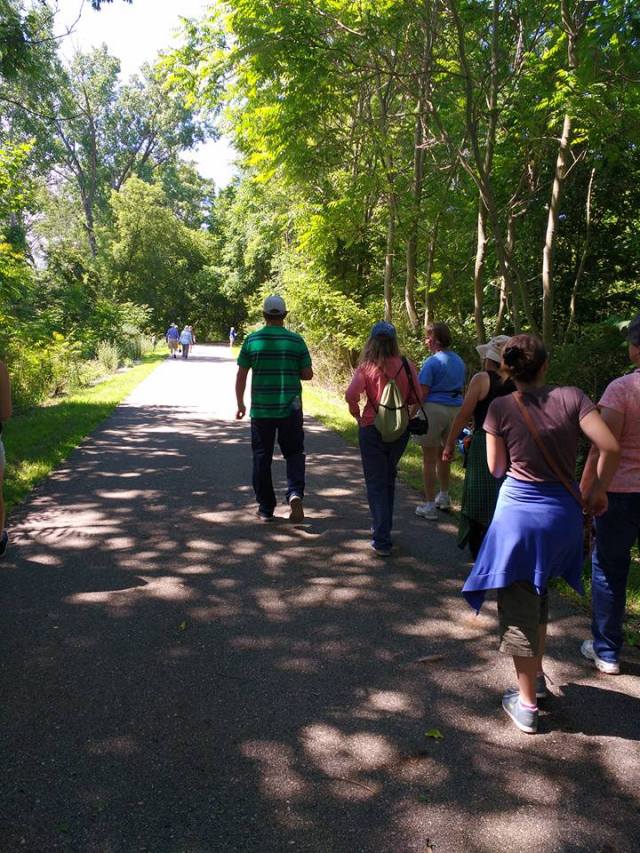


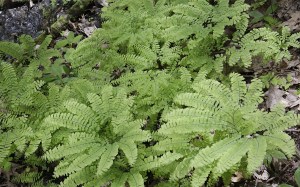
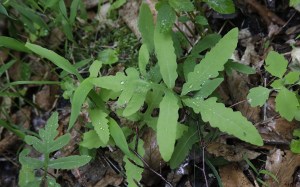

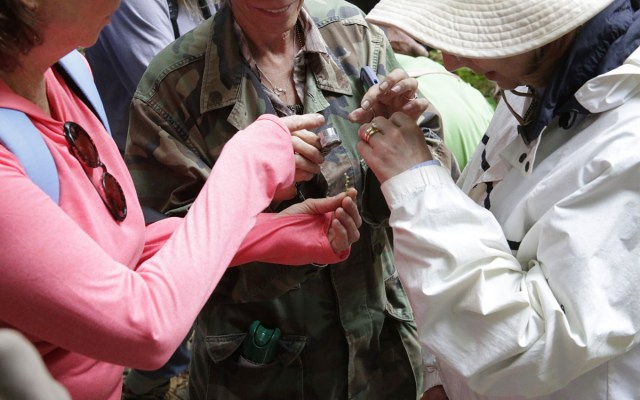 Connie told us the way she identifies plants. It isn’t always easy. :Usually a botanist will first look at the flower(s),” she says, “but when plants are not flowering, the leaves, habit and habitat will often clue you to the genus if not the species. For example, a young poison ivy plant has very nearly identical leaves with apparent side thumbs out like a box elder seedling, but the box elder will have opposite branching, while poison ivy has alternate branching.”
Connie told us the way she identifies plants. It isn’t always easy. :Usually a botanist will first look at the flower(s),” she says, “but when plants are not flowering, the leaves, habit and habitat will often clue you to the genus if not the species. For example, a young poison ivy plant has very nearly identical leaves with apparent side thumbs out like a box elder seedling, but the box elder will have opposite branching, while poison ivy has alternate branching.”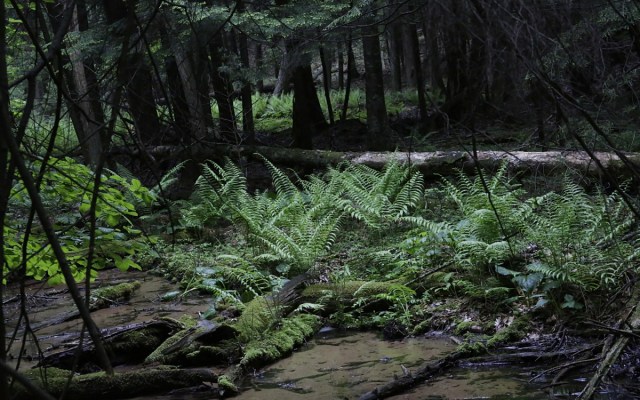 Paradise Valley was lush and green and still, with small, rippling streams winding their way throughout. And then suddenly there was a refreshing vista of cool water — Cleveland Creek — with a wobbly bridge spanning its width. That was the far boundary of our walk. We turned around and found our way back to the country road, with Connie stopping here and there to identify plants at the request of hikers reluctant to let their expert guide leave. And then the valley was quiet again.
Paradise Valley was lush and green and still, with small, rippling streams winding their way throughout. And then suddenly there was a refreshing vista of cool water — Cleveland Creek — with a wobbly bridge spanning its width. That was the far boundary of our walk. We turned around and found our way back to the country road, with Connie stopping here and there to identify plants at the request of hikers reluctant to let their expert guide leave. And then the valley was quiet again.



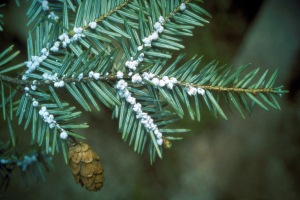
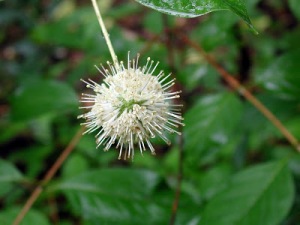
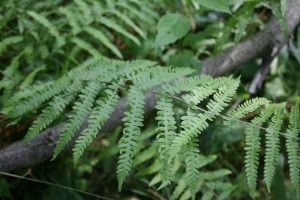

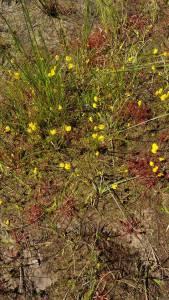






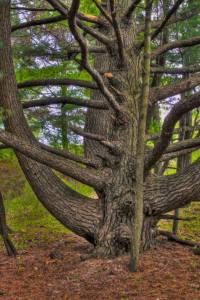

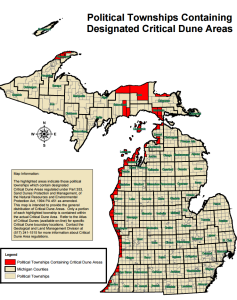








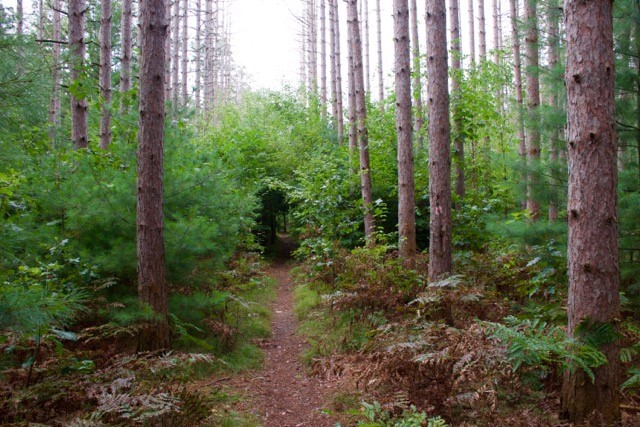











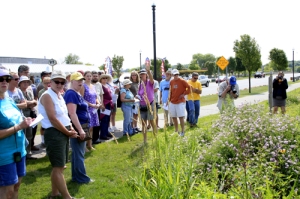

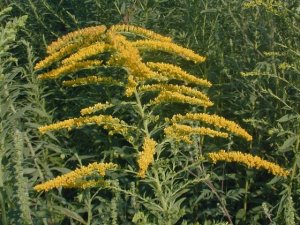

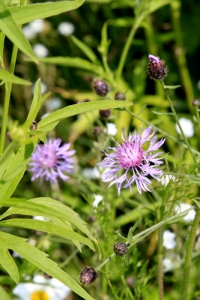

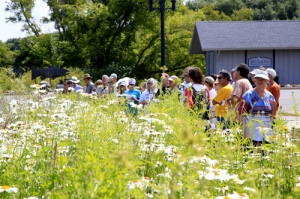


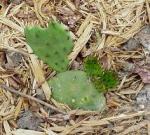











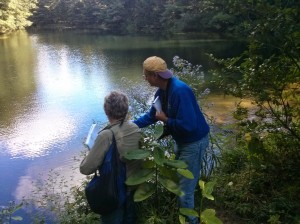
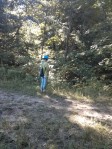



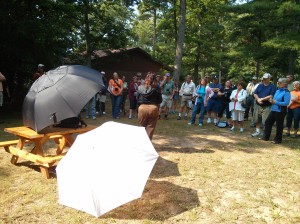



 It was a perfect and gorgeous summer day at Duck Lake State Park — one of many warm and sunny days we were fortunate to have in the White Lake area. We had about 30 or so people who joined me and guide, expert botanist and photographer, Patricia Pennell.
It was a perfect and gorgeous summer day at Duck Lake State Park — one of many warm and sunny days we were fortunate to have in the White Lake area. We had about 30 or so people who joined me and guide, expert botanist and photographer, Patricia Pennell. She made sure to tell us a special story of getting coffee on another hike she guided as part of our nature walks program. She had come early to the walk without any coffee a few years ago – not an auspicious beginning at all! To her surprise and joy, a woman came by, took sympathy on her coffee-less state, and went to bring her back a hot cup of coffee! She often remembers this small but important offering and the pleasure it brought her.
She made sure to tell us a special story of getting coffee on another hike she guided as part of our nature walks program. She had come early to the walk without any coffee a few years ago – not an auspicious beginning at all! To her surprise and joy, a woman came by, took sympathy on her coffee-less state, and went to bring her back a hot cup of coffee! She often remembers this small but important offering and the pleasure it brought her. Our walk was alongside the north shore of Duck Lake, in the state park. The water was very high, and Patricia noted it was quite a bit higher than a reconnaissance visit she had made just about a week prior to our walk. She pointed out areas that had been dry and that she had walked on that were now covered in water. Sadly, the sundews that DNR staff had indicated were in this area, were now under water.
Our walk was alongside the north shore of Duck Lake, in the state park. The water was very high, and Patricia noted it was quite a bit higher than a reconnaissance visit she had made just about a week prior to our walk. She pointed out areas that had been dry and that she had walked on that were now covered in water. Sadly, the sundews that DNR staff had indicated were in this area, were now under water. Patricia noted how the sizeable wetland pond areas scattered along the shoreline are very good for filtering, water storage, and a home for valuable plant and wildlife species. She said there is evidence that water levels were higher thousands of years ago – a ridge many feet from the lake edge, which probably used to be a shoreline. She also noted that certain plants that grow along the water’s edge are found many feet from the shore, struggling to survive in a now forested and dry area.
Patricia noted how the sizeable wetland pond areas scattered along the shoreline are very good for filtering, water storage, and a home for valuable plant and wildlife species. She said there is evidence that water levels were higher thousands of years ago – a ridge many feet from the lake edge, which probably used to be a shoreline. She also noted that certain plants that grow along the water’s edge are found many feet from the shore, struggling to survive in a now forested and dry area.